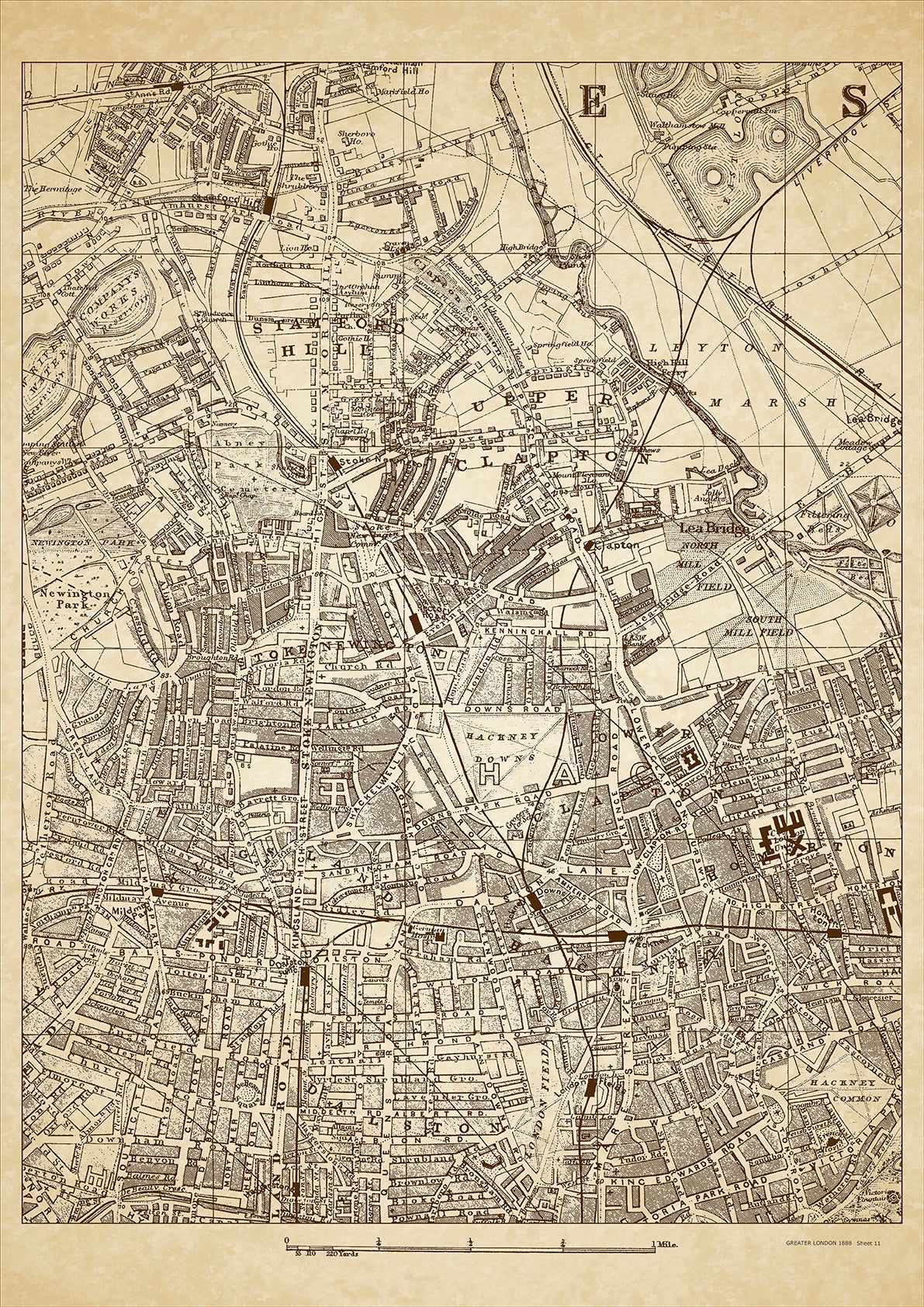Elite Wall Decor
Greater London in 1888 Series - showing Stamford Hill, Clapton, Hackney, Leyton Marsh, Lea Bridge, Upper Clapton, Stoke Newington, Kingsland, Dalston - sheet 11
Greater London in 1888 Series - showing Stamford Hill, Clapton, Hackney, Leyton Marsh, Lea Bridge, Upper Clapton, Stoke Newington, Kingsland, Dalston - sheet 11
Couldn't load pickup availability
This digital download is a high-quality 300dpi JPG image of a London street atlas map dated 1888. It is enlarged, and sized to print if required at A2 dimensions (59.4 cm x 42 cm), or simply view it in close up on your computer screen using for instance Windows Photo or similar.
These maps are sharp and clear. All railway lines and stations are shown and named.
Stamford Hill, Clapton, and Hackney were primarily working-class neighborhoods in London in 1888. These areas were known for their bustling markets and lively street life. One of the historical places of interest in the area was the Hackney Empire, a popular music hall that hosted performances by famous music hall stars of the time.
Stamford Hill was also home to many Jewish immigrants who settled in the area in the late 19th century, creating a vibrant Jewish community with synagogues, kosher shops, and other Jewish institutions.
Clapton was a diverse neighborhood with a mix of different immigrant communities, including Irish, Jewish, and Caribbean. The Clapton Square Conservation Area, with its historic Georgian townhouses and green spaces, was a notable feature of the neighborhood.
Hackney was a bustling industrial area with factories and workshops. The Hackney Wick area, near the River Lea, was known for its waterways and boatyards. The Hackney Central area was a hub for shopping and entertainment, with many cinemas and theaters.
Overall, these neighborhoods were home to a diverse mix of working-class people, including immigrants and their families, who made up the vibrant fabric of London's East End in the late 19th century.
Whether you're a history buff, a cartography enthusiast, or simply looking for a unique piece of decor for your home or office, this map is sure to delight. It's a piece of history that you can own and enjoy for years to come.

